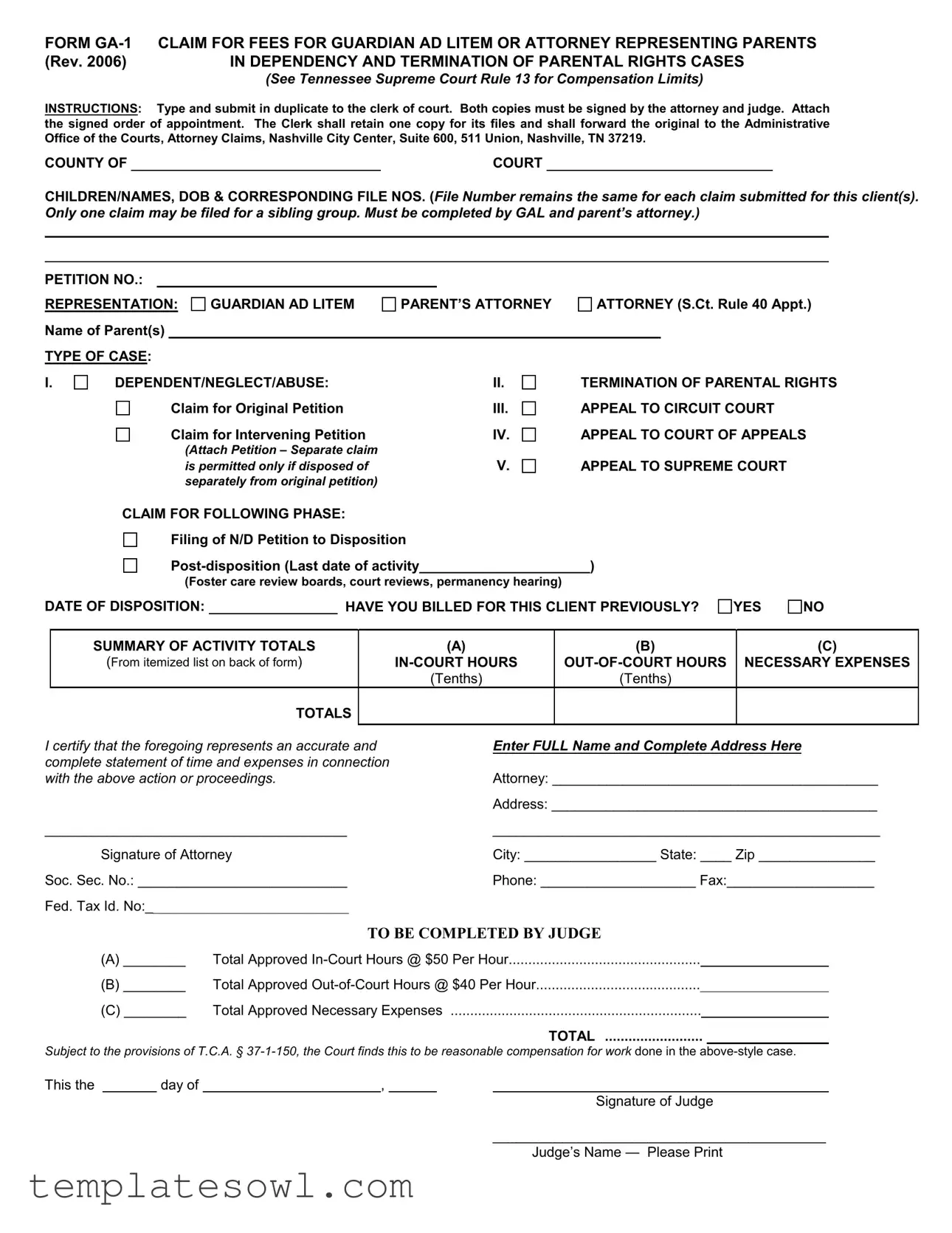What is the GA-1 form used for?
The GA-1 form is specifically designed for submitting claims for fees related to Guardian ad Litem or attorneys representing parents in dependency and termination of parental rights cases. It allows attorneys to recover compensation for their services in these types of legal matters.
Who needs to fill out the GA-1 form?
Both the Guardian ad Litem (GAL) and the parent’s attorney must fill out the GA-1 form. The form needs to be submitted in duplicate, signed by both the attorney and the judge. It requires specific information about the case and the services provided.
When should the GA-1 form be submitted?
The GA-1 form should be submitted after the attorney has provided services in dependency and termination cases. It is important to ensure that the form is submitted in a timely manner to facilitate proper processing and payment of fees.
What attachments are required with the GA-1 form?
When submitting the GA-1 form, you must attach the signed order of appointment. Additionally, any itemized lists of activities, expenses, and a certified copy of the court's prior approval of expenses should also be included, especially if there are out-of-pocket expenditures being claimed.
What information is necessary to complete the GA-1 form?
The form requires detailed information, including the names and dates of birth of the children involved, case file numbers, types of cases, and expansive summaries of activities, in-court hours, out-of-court hours, and necessary expenses. Accurate documentation is essential for approval.
How is the compensation calculated on the GA-1 form?
Compensation is calculated based on the total approved in-court and out-of-court hours worked on the case. The in-court hours are compensated at a rate of $50 per hour, while out-of-court hours are compensated at $40 per hour. Necessary expenses, once approved, are added to the total amount.
What happens after submitting the GA-1 form?
Upon submission, the clerk of court will retain one copy for their files and send the original to the Administrative Office of the Courts in Nashville. The judge will review the form, and if all requirements are met, they will approve it for compensation.
Can one claim be filed for a sibling group?
Yes, only one claim may be filed for a sibling group. It simplifies the process when representing siblings in dependency cases. It is vital to indicate that the claim applies to all siblings involved when completing the GA-1 form.
What if I have billed for the client previously?
The GA-1 form includes a question asking whether any prior billing has occurred for the client. You must answer this question to avoid complications or errors in processing your claim. Ensure that all submissions reflect accurate billing history.



